 Originally published February 25, 2000, in Comics Buyer’s Guide #1371
Originally published February 25, 2000, in Comics Buyer’s Guide #1371
Two things…
I don’t know if other young fans have (or had) this problem, but when I was a kid, I couldn’t distinguish art styles. Take the old Marvel Superheroes cartoon. That was “animated” (if we dare use so drastic a word) by taking panels from various Marvel Comics and doing rapid zoom-ins, Dutch angles, and the occasional movement of one body part (Thor whirling his hammer, for instance.) But they had certain panels that were stock shots. Consequently, if they were doing an Iron Man story by, say, Don Heck, a Jack Kirby Iron Man or Gene Colan Iron Man might suddenly pop into the middle of the action. The thing is, it didn’t really register on me that the style had varied. Not only that, but in letters pages of comics when fans would comment on different artists’ styles, I could not for the life of me comprehend how anyone could just look at a page of art and be able to tell—just by looking at it—who had drawn it. Perhaps I simply wasn’t very… oh, what’s the word I’m looking for? Oh, yes. “Bright.” (Although at that time, I wasn’t actually reading Marvel comics. My dad wouldn’t let them in the house; he felt the characters were too ugly, and didn’t look sufficiently heroic. I tend to think that, sitting in front of printed pages, I would have picked up on Kirby versus Ditko. At least I’d like to think so.)
Gil Kane was the first artist whose style I actually noticed.
I’m not entirely sure why. Maybe because I simply was getting older and starting to be able to pick up on things. Or maybe it was that Kane had so many distinctive visual tics. The nose, for one. Kane’s characters all seemed to have deviated septums or flared nostrils. Then there were the legs, with each calf impossibly angled, muscled and twisted back. Gil Kane characters looked like they were in desperate need of rhinoplasty or an orthopedic surgeon.
All I knew was that I was able to look at a page and say, “Hey! Wait a minute! This guy drawing Green Lantern… he was drawing the Atom, too! Because Green Lantern’s got that same funky nose and leg thing going.” As I got older and naturally a bit more savvy, I also got into Marvel Comics (i.e., I was able to sneak them into the house.) When Kane took over Spider-Man, it was during one of the weirder phases of webhead’s existence, including the acclaimed/notorious six-armed period. But dámņ, at least Kane could draw spidery. Probably only Ditko equaled or topped Kane in rendering a Spider-Man who genuinely looked like he was inhumanly skittering across walls and ceilings.
I remember the first time I spotted him at a convention. Ironically, he was standing with a group of artists, chatting, and I was immediately able to pick him out. He was the only one who looked like a Gil Kane drawing.
I hope the foregoing doesn’t sound too flippant. Wasn’t meant to be. It’s just how I remember him. This column extends its condolences to his family and close friends for their loss, and to the fans who will not have the opportunity to see any new work by this acclaimed master of the form.
* * *
Speaking of Spider-Man #100, which built to the shock ending that an experiment-gone-awry had left Peter Parker with four extra arms, that reminds me…
I hate previews. Hate them. Loathe them. Despise them. Did I mention that I hate them?
When I, as a young reader, read Spidey #100, I was totally blindsided. I had no idea it was coming. All I knew was that I was reading along, and on the final page, saw that Peter’s endeavor to divest himself of his spider-abilities had hideously backfired, leaving him with a total of six arms. That, combined with his legs, gave him thoroughly spidery eight limbs. I was amazed, shocked. Oh my God! Was this the way of the future? Would he permanently have eight limbs? What would Gwen say? How the hëll would he hide this from Aunt May? This latest development was… was…
Well, it was pretty stupid, actually, in hindsight. And it was short-lived, the arms going away a mere two issues later. But I can still recall how excited I was at the time about the story.
Now… a young reader today with access either to an Internet or a comic shop with chatty older fans would not have the opportunity to view the story in the same way. Because thanks to the broadcasting of story points months in advance, writers have largely lost the ability to spring things on readers. If that story were being done now, a young fan would know months in advance that Spidey was going to acquire four more arms. And he would have had several months of older fans dissecting the story, pre-publication, centering on the impossibility of four arms just springing into existence (as if a guy crawling walls is possible) and hammering home just out dumb the notion is. And just before the issue hits the stands, the solicit for issue #103 would come out, featuring the cover of that issue with a normally-armed Spider-Man, thus letting the young reader know that it was only a brief story arc. So by the time the last page of #100 is in front of the reader, there’s no kick, no pop, no shock, no nothing.
The difficulties and pitfalls in springing surprises seem to grow exponentially. Remember Thunderbolts #1? Who doesn’t? How could anyone forget it? That shocking revelation at the end that the Thunderbolts were not at all what you thought they were. That, rather than being a new set of heroes, they were actually an old set of villains in disguise. Fans loved it. They were totally surprised
Well, guess what? When the Thunderbolts were going to make their debut in Incredible Hulk, it was a carefully created event done in tandem with Kurt Busiek, who was helming the regular book. Kurt was determined to beat the odds and stun the fans with the end of his debut, and I was more than happy to do whatever I could to help. To that end, I made a point of asking to see the solicitation information for that issue before it went out. The info was faxed over to me, and this is what it said:
“The Hulk battles the Thunderbolts, a new team of heroes who are actually a group of super-villains in disguise.”
You think the end of Thunderbolts #1 shocked you? I can tell you with some degree of confidence that, whatever you experienced in reading that issue is nothing compared to what I went through reading that solicit info for Hulk several months earlier. I was on the phone to Marvel in a heartbeat, practically shouting into the phone, “Tell me this hasn’t gone out yet!” Fortunately enough it hadn’t, and I immediately dictated a rewrite of it, eliminating the offending passage.
By the way, hope you’re looking forward to the Young Justice “event,” Sins of Youth. Because the punchline to issue #2 is blown in the latest previews that describes the events of the following issue.
It’s getting beyond aggravating. And modern fans don’t even realize what they’ve lost as they learn about, criticize, and dissect story elements months before they happen. Sometimes early and incorrect info gets out, and fans eviscerate an upcoming book based upon a storyline that has radically changed from what will actually see print. They don’t realize that the thrill of a Thunderbolts #1 reveal used to the standard level of shocks that comics could offer. When fans experienced the sort of “Oh my God, I never saw that coming” sensation at the end of Thunderbolts #1, that was what fans were capable of encountering every month, twenty years ago. Now it happens so rarely that when it does occur, it’s phenomenal. And people wonder why readership is down.
I understand that advance solicits are designed to create a buzz and get people excited about what’s coming up. Unfortunately, as often as not, they backfire, getting people turned off, and taking away the important writer’s tool of surprise.
At the very least, writers should have the opportunity to review solicits for upcoming issues on a regular basis so that they can eliminate the most blatant reveals (as I did with that issue of Hulk) and have a fighting chance of maintaining some of the—dare I say it—fun of storytelling. If that eventuality came about, that really would be a shock. And you wouldn’t read about it anywhere three months in advance… thank God.
(Peter David, writer of stuff, can be written to at Second Age, Inc., PO Box 239, Bayport, NY 11705.)
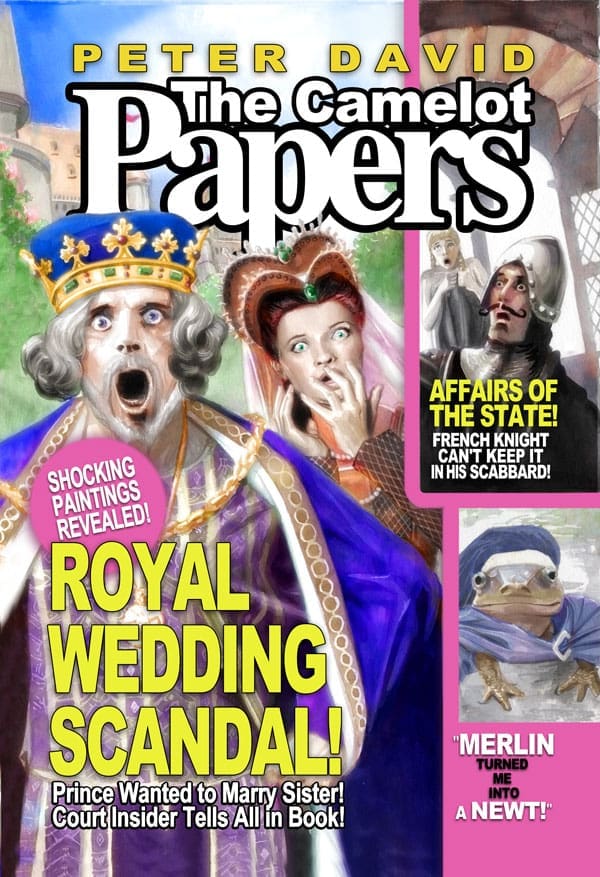
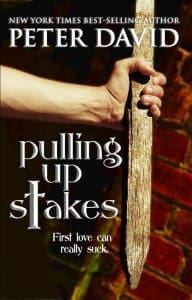
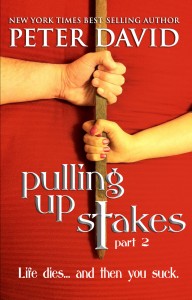
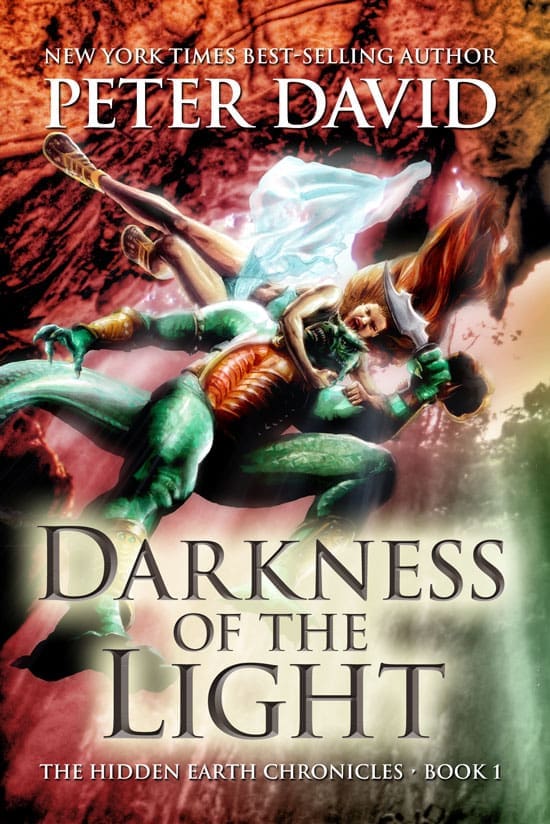
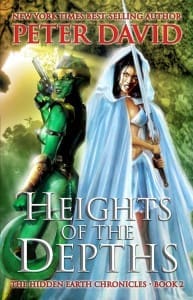
I would like to offer a related comment, but regarding movies. Every movie is cussed and discussed ad nauseum for at least six months online before it ever hits theaters. In my opinion, this takes some of the magic out of going to the movies. Ever watch an old time movie preview? (I hate the term “trailer.” To me, that is something a redneck lives in.) Back on topic, old time movie previews would show a few of the stars, and possibly mention the director by name. Very seldom did you see any scenes from the movie. I actually like that idea better. In my experience, the longer the preview, the more ultimately disappointing the movie will be.
Peter David: I hate previews. Hate them. Loathe them. Despise them….Now… a young reader today with access either to an Internet or a comic shop with chatty older fans would not have the opportunity to view the story in the same way. Because thanks to the broadcasting of story points months in advance, writers have largely lost the ability to spring things on readers.
Luigi Novi: Agreed. This isn’t just comics, but permeates all aspects of the entertainment industry. Now important plot or character points in films is revealed by trailers and even tie-in toys, thus stealing the power of storytelling from the storyteller. It’s ridiculous.
I remember finally ‘getting it’ when the snapper to the Thunderbolts story was revealed. I was reading the body of the story, thinking the ‘heroes’ dialogue was horrible…just one long cliche. Then it’s revealed that they’re bad guys, and it all fell into place…’holy crap! I get it! That’s how they think heroes talk!’ I’m glad that you guys were able to successfully pull that one off.
You see it in tv shows all the time; special guest stars and cameos which should surprise the viewers are plastered all over the promos, completely undercutting the intent of the shows’ creators.
The first art style I remember recognizing was Wayne Boring on Superman…when he’d do an occasional issue, it was ‘oh, it’s that guy who draws Superman all old-timey’. I also remember being impressed by Neal Adams’ first X-Men, thinking that his Hank McCoy looked ‘really real’.
The only people who seem to be able to keep a secret nowadays and the Doctor Who crew and the fans.
Nobody knew about Clara being in the first episode of the recent series and nobody knew for definite that Tom Baker would be in the 50th anniversary ep, Peter Capaldi’s eyes either, come to that.
Dunno how they do it, but it was a total shock to see all these without them being spoiled by the internet. I wonder if River Song was going back in time to clear them out the internet as they happened…….spoilers 😉